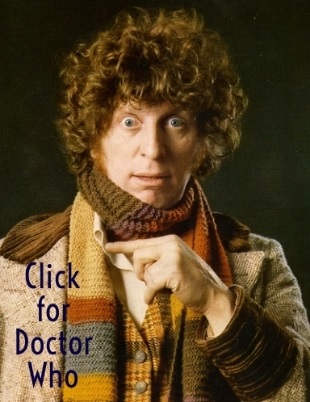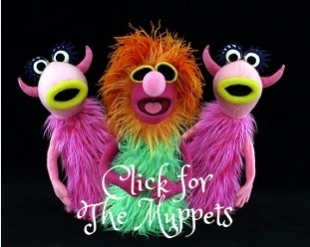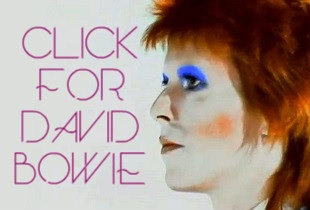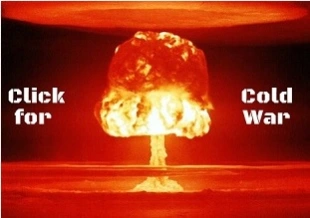007/ 50: “My name’s Bond, James Bond” #2 ~ the fiasco at Casino Royale? (1967)
Wheel of fortune?: the spoof James Bond adventure Casino Royale – and first film adaptation of Ian Fleming’s original novel – was a chaotic if luxurious affair, but did it make cinema tills ring?
If you’re at all like me and have ever bothered to sit through 1967’s Casino Royale, the so-called comedy pastiche of all things Bond, you probably concluded as soon as its closing credits, well, closed that that’s two-and-a-bit-hours of your life you’re never getting back. But, again, if you’re at all like me you may also have wondered after watching said flick, just how on earth such a star-packed, dazzlingly looking and beautifully scored, but most of the time incredibly crap, and yet at other times rather amusing grand disaster of a movie ever got made in the first place? And how, coming practically slap bang in the middle of the mid- to late ’60s ‘Bondmania’ of the Connery 007 era, it fared at the box-office?
Well, if you have pondered on those puzzlers, peeps, then dare I say it, this (the latest effort from George’s Journal to mark Blighty’s finest‘s 50th anniversary year) is verily the blog post for you. Just how did this first big-screen effort to offer up another actor to Connery as Bond (actually many of them) come to the screen – especially when the ‘official’ Bond movie people appeared to own the rights to Fleming’s novels as thoroughly as 007 owns the bragging rights when it comes to pulling? And just what did the public make of it? Were they delighted, bemused (like most of us nowadays) or simply disinterested?
So, first things first: it was all Ian Fleming’s fault. Were it not for the uncoordinated manner in which he sold away the rights to adapt his Bond novels into films, Casino Royale would never have been made – at least not by the producer whose ultimately bloated and disfigured baby it was, Charles K Feldman. For it was this one-time Academy Award-nominated producer who brought this flick to cinemas, not James Bond’s regular film chiefs, producers Albert R Broccoli and Harry Saltzman of Eon Productions.
These two had acquired the rights to turn every one of Ian Fleming’s Bond novels into movies when the latter bought them from the author in 1961 and the former teamed up with him to form Eon a few months later. However, as part of this deal, Fleming hadn’t sold them the rights to his very first novel, the breakthrough book that introduced the world to James Bond, 1953’s Casino Royale. That was because three years earlier they’d found their way into Feldman’s mits. Exactly how isn’t important; what is important is Feldman had landed the rights and come the mid-’60s set about filming the book – indeed, filming it as a rival Bond movie to the four highly successful ones Broccoli and Saltzman had by now made.
.
.
Whatever you think of the movie that was eventually churned out, don’t let it discolour your opinion of Charles K Feldman’s career prior to this notorious venture, because it was stellar. Originally a talent agent for Hollywood royalty such as John Wayne, Claudette Colbert, Lauren Bacall and director Howard Hawks (indeed, legend has it that it was Feldman who got Bacall’s debut role bumped up in Hawks’ classic 1946 Humphrey Bogart-starring noir The Big Sleep, a move that made her an instant star), he went on to produce the classics A Streetcar Named Desire (which, of course, made Marlon Brando a total star and got Feldman his Oscar nom), the 1955 Marilyn Monroe comedy The Seven Year Itch (the one with that subway grille scene) and the madcap bedroom farce What’s New, Pussycat? (1965), which co-starred Peter Sellers, Woody Allen, Peter O’Toole and Ursula Andress.
Of all the movies he’d made, it was this latter effort – a big hit notwithstanding – that certainly more than any other pointed the way for what Casino Royale would become. Not only would Casino Royale share those four stars (among all of those it features) mentioned above with What’s New, Pussycat?, but the Swinging Sixties-informed, often crazy and utterly rompish tone of Pussycat could be said almost to be a precursor of Royale‘s. Not just that, but the fact that the former was initially a vehicle for its original writer Warren Beatty (its title apparently was the phrase Beatty used when answering the phone – how very ’60s) and it turned into a project re-written by Allen to such an extent that Beatty jumped ship/ was forced out completely, may well be a sign of the circus Royale would become just a couple of short years later.
Not that Feldman ever intended Casino Royale to turn into a cowboys and Indians-crashing and performing seals-featuring circus, of course – in fact, at the outset his intention was not to make a comedy at all, but adapt the book straight. Just one year after the novel’s original publication, the American TV network CBS had purchased its rights from Fleming and immediately had made an adaptation – so, yes, James Bond first appeared on-screen (the small screen, that is) as early as 1954 (see middle video clip below). The hour-long Casino Royale (Climax!) telly drama wasn’t a success, though; not least because it was filmed live, but also because it rather bizarrely switched around the nationalities of the British Bond and his American sidekick Felix Leiter, ensuring the first screen actor to play the iconic hero was Californian Barry Nelson (although Bob Holness, future host of cult ’80s UK gameshow Blockbusters, had already played the character on British radio – yes, really).
And yet, all this hadn’t deterred Feldman; he was sure that if adapted right, Casino Royale could be a big-screen success. In the late ’50s, he turned to Oscar-winning screenwriter Ben Hecht to have a whirl at a few script drafts. Ironically, as with the ’54 TV version, Hecht’s first attempt retained much of the novel’s content but replaced the British Bond with a card-playing American gangster. Subsequent drafts saw Bond return, but also the gambit that the name ‘James Bond’ is passed on to different agents as a sort of codename to confuse his enemies. For wrong rather than right surely, this idea made it all the way through to the final film, but another Hecht notion that ‘Bond’ escapes from a German brothel disguised as a lesbian mud wrestler did not. Quite frankly, it might as well have done.
Boom and bust: David Niven endures an explosion – figurative as well as literal? – at the start of the film (l), while Joseph McGrath tries to direct Peter Sellers as Jacqueline Bisset looks on (r)
Apparently, in 1966 Time magazine was reporting Hecht had departed the project and the script had been completely re-written by legendary auteur Billy Wilder. Whether that was merely Hollywood tittle-tattle, who knows; similarly, rumour has had it that Catch-22 (1961) author Joseph Heller also contributed to the script. What is true is the flick’s three credited screenwriters would turn out to be Wolf Mankowitz (whom ironically had introduced Broccoli to Saltzman back in ’61 and had written early drafts of their first Bond effort, 1962’s Dr No), former blacklisted Hollywood scribe Michael Sayers and UK comedy writer John Law (whom among other things had penned the all-time classic ’66 Frost Report sketch ‘Class’, which had seen John Cleese, Ronnie Barker and Ronnie Corbert represent Britain’s three classes by standing in line according to their varying heights).
Filming of the movie took place during much of 1966 and, clearly contributing to the almighty mess that was the finished product, was bizarrely chaotic. In the same Time article that had claimed Wilder had worked on the script (a multi-page colour spread on the movie, in fact), star David Niven had admitted: “it’s impossible to find out what we’re doing”. He may have meant that it was impossible for anyone working on the flick to find out what was actually going on. Feldman’s approach to try and better the Broccol-Saltzman Bond efforts was to offer the audience more… and then more and more again and yet more.
Clearly a snowball effect took over, ensuring that not only did the filming process become a seemingly out-of-control Hollywood Frankenstein-like horror monster (Frankenstein does actually feature in the film at one point), but also the budget trumped up by studio backer Columbia Pictures (ironically the financial backers of the Eon Bond today, although they’re now owned by Sony) doubled; it was originally $6million and the end $12million. In this manner at least, Casino Royale bettered the other Bonds – Thunderball (1965) had cost just $11million and You Only Live Twice, released just months after Royale, was a relative snip at $9.5million.
So where did all the money go? Some of it definitely on the cast. As mentioned, Niven, Sellers, Allen and Andress all feature, but so too do Hollywood legends Orson Welles, Deborah Kerr, Jack Holden and John Huston, as well as Swinging Sixties ‘It Girls’ Joanna Pettet, Daliah Lavi, Barbara Bouchet, Angela Scoular and Jacqueline Bisset. There are also cameos from Jean-Paul Belmondo, George Raft, as well as top Brit comedy performers Bernard Cribbins, Anna Quayle and Ronnie Corbett and, in-jokily, Eon Bond alumni Vladek Shebal (Kronsteen in 1963’s From Russia With Love) and Burt Kwouk (Mr Ling in 1964’s Goldfinger and, of course, Cato in the Pink Panther film series).
.
Factfile-Factfile-Factfile-Factfile-Factfile-Factfile-Factfile-Factfile-Factfile-Factfile
- Straight after working on Casino Royale, one of its directors Ken Hughes was hired by Broccoli and Saltzman to helm their classic musical adaptation of Ian Fleming’s children’s book Chitty Chitty Bang Bang (1968)
- One of Casino Royale‘s many female distractions, Angela Scoular became a ‘bona fide‘ Bond Girl just two years later when she was cast as one of Blofeld’s ‘Angels of Death’, Ruby Bartlett, in ‘official’ series entry On Her Majesty’s Secret Service (1969)
- Casino Royale cast member Terence Cooper (who plays the agent that becomes ‘James Bond’ owing to his ability to sexually attract any woman he meets) was considered for the the real thing in On Her Majesty’s Secret Service – only for George Lazenby to land the gig
Factfile-Factfile-Factfile-Factfile-Factfile-Factfile-Factfile-Factfile-Factfile-Factfile
.
As if this incredibly impressive, nay bizarrely diverse, cast couldn’t be cajoled into performing by one helmer alone, the film instead used of half a dozen (hey, at least there’s still less of ’em than there were on-screen Bonds). To be fair, Feldman probably found it necessary to hire so many ringmasters not because of the largeness of his cast, but because of the largesse of the circus threatening to explode out of his big-top. With constant changes of artistic direction and supposed daily re-writes of scenes, no one director could have directed this flick. Enduring the filming process must have been like witnessing the nightmarish development of the final alien in this summer’s Prometheus, a hybrid pulling in inspiration and ideas from all over the shop – Hollywood genre in-jokes, spy-fi satire, moddish nods and psychedelic visuals (sometimes all of them in the same scene).
For what it’s worth, cast member John Huston mostly directed the film’s opening (the scenes at the stately home of Niven’s stately Sir James Bond and McTarry’s Scottish castle with Deborah Kerr); Val Guest directed many of the scenes with Woody Allen (which unsurprisingly were penned by Allen himself) and additional ones with Niven to try and link the whole film together; Ken Hughes (whom Broccoli and Saltzman had originally considered as helmer for Dr No) directed perhaps the film’s wittiest and best bit, the Berlin scenes with the Twiggy-like Pettet; between them Robert Parrish and Joseph McGrath directed the scenes featuring Sellers, Andress and Welles; and, uncredited, stunt arranger Richard Talmadge co-directed the utterly bananas climatic battle at ‘Casino Royale’ itself.
The most legendary leg of the filming, thanks to its referencing in Roger Lewis’s biography The Life And Death Of Peter Sellers (1995) and its pseudo-screen adaptation of 2004, is that which involved Peter Sellers. Cast as Evelyn Tremble, a genius baccarat player enlisted by Niven’s real 007 to smash SPECTRE agent Le Chiffre (Welles) at the gaming tables while assisted by espionage mercenary Vesper Lynd (Andress), Sellers initially invested all his enthusiasm in the project, seemingly seeing Tremble (yet another fake Bond but in the film’s only ‘real’ bit of Fleming adaptation) as the opportunity he’d wanted all his career to play a dashing heroic lead. This then explains why Sellers’ acting seems inexplicably to veer from the slapstick (cavorting on a bed with Andress in costume as Hitler, Napoleon, Charlie Chaplin and Toulouse Lautrec) to the serious (playing it straight in the casino scenes and zealously knocking out an immigration official at an airport like a Bond-esque hard-man).
Whatever aspirations Sellers had for his involvement in the film pretty much went out the window, though, when his involvement became sporadic. A troubled chap and thus an unreliable performee, Sellers’ relationship with Welles quickly turned sour; the scene at the gaming table they share had to be filmed in two parts as neither would act opposite the other. And when Sellers realised the film – or his section of it – was turning into a comedy/ was always supposed to be a comedy (who knows which?) he both started re-writing his own lines and hired Terry Southern to do so it would play straighter. In the end, he totally severed links with the flick and a demise for his character had to be hastily put together from bits already filmed – the strange LSD-esque nightmare sequence in which he’s tortured by Le Chiffre and finally ‘shot dead’ by Vesper. Ironically, it’s one of the most engaging and dramatically satisfying of the entire movie.
.
.
Planned for release at Christmas ’66, Casino Royale finally made it on to screens four months later on April 13 1967. And, after the chaos that had been its production, this date proved far from unlucky for Feldman’s folly because , relatively speaking, audiences of the time actually lapped it up. Sure, Royale was no hit in the league of the Eon Bonds of the mid- to late ’60s (surely it would have been a fantastic achievement, nay a miracle, had it turned out to be), but in grossing about $42million at the box-office – around $283million in today’s money – it was far more than a modest financial success, in spite of its enormous budget. Moreover, not only did hit the #1 spot at the US box-office during its run (see middle image below), but also finished 13th in the list of the highest grossing movies in North America for 1967 – by comparison, the ‘official’ 007 effort that year, You Only Live Twice, finished in seventh place.
So why was it a genuine success and not the utter failure many for decades have assumed it must have been? Part of the reason has to be its marketing. Publicised honestly as something of a Swinging Sixties romp (complete with a body-painted girl à la Andy Warhol on the poster), it was also sold on the line that it was the ultimate Bond film, boasting more girls, more villains, more stunning visuals, more outlandish scenes and, yes, more Bonds than ever before. It simply was ‘more more‘ than the masses had yet seen in any Bond film; in fact, it arguably still is.
In marketing the movie this way, Feldman and his Columbia cohorts were shamelessly hitching a ride on the back of the ‘Bondmania’ phenomenon, of course, which unquestionably must have helped pull in the punters (i.e. it was a film that featured ‘James Bond’, therefore people would go on and see it. But the raison d’être of the finished film was to send up the whole Bond thing that had developed into/ fed an entire spy-fi sub-genre anyway, so technically it could have delivered something of a cinematic surprise or twist for filmgoers expecting a straighter ‘Bond film’. The filmmakers then, if challenged, may well have happily defended the shameless publicity linking it to Eon’s Bond bandwagon given such ‘artistic merits’.
But surely there was more to the film’s success than marketing and the Bond brand – dare one say it, but perhaps the film itself played a role too? There’s no getting away from it, Casino Royale is a car-crash of a movie. But, to spin out that metaphor further, at times it genuinely feels like a pile-up of Rolls-Royces and Bentleys. For the vast majority of the time, it looks fantastic. Unquestionably, one the major reasons why its budget spiralled upwards in the way it did was because of the truly impressive sets designed by Michael Stringer.
From the ridiculous to the sublime: despite the presence of both sky-diving Red Indians (l) and Frankenstein (r) in its climax, Casino Royale still hit the #1 spot at the US box-office (m)
Often they’re opulent (with Western aristocratic iconography, including at one point real lions), sometimes deliriously psychedelic (full of swirling pinks and oranges and blues and greens) and other times they brilliantly aid the pastiche (the darkly jagged look of the Berlin spy school wonderfully apes the iconic look of 1920’s classic horror The Cabinet Of Dr Caligari). In short, Casino Royale‘s visuals are an unforgettable tour de force.
Not just that, though, for the movie also sounds terrific. Hiring the composer he’d used for What’s New, Pussycat? again proved one of Feldman’s canniest moves on Casino Royale (you may argue there isn’t much competition there given his other decisions, but hey). For the meloldic meastro that is Burt Bacharach, whom rightly was white-hot property when it came to popular music in the ’60s, hit Royale‘s score absolutely out of the park.
Bacharach’s combining of campy, old British music hall-style themes for the moments of high parody and, well, ludicrousness (an example being the film’s fine title theme played by Herb Alpert’s Tijuana Brass – a chart hit – and sung at the end by Mike Redway) with lush, luxurious, romantic melodies that perfectly compliment the opulent look of the movie (listen to the film’s Oscar-nominated and now classic love theme, The Look Of Love, performed by original singer Dusty Springfield in the clip below) worked a total treat. It’s almost worth sitting through the movie for its music alone. Almost. Well, all right, sort of.
And, even if few of today’s film fans have done so, many a film critic back in the day certainly sat through Casino Royale. While some were unsurprisingly far from won over by what they witnessed (Roger Ebert described it as ‘possibly the most indulgent movie ever made’; Variety decried its lack of ‘discipline and cohesion’), others – admittedly the minority – have over the years somewhat reassessed the flick. At Bright Lights Film Journal (Brightlightsfilm.com), Robert von Dassanowsky claims it’s ‘a film of momentary vision, collaboration, adaption, pastiche, and accident. It is the anti-auteur work of all time, a film shaped by the very zeitgeist it took on’, while Allmovie.com reviewer Andrea LaVasseur even heralds it a ‘psychedelic, absurd masterpiece’.
But what do I, deep down, think? Well, folks, you’ll just have to read for yourself when I come to review the flick itself as the first in the next instalment of my ongoing ‘Bondathon‘. For, yes, in the words of Mike Redway, don’t fear, James Bond is here… and here to stay for some time yet at George’s Journal…
.
.



























Trackbacks